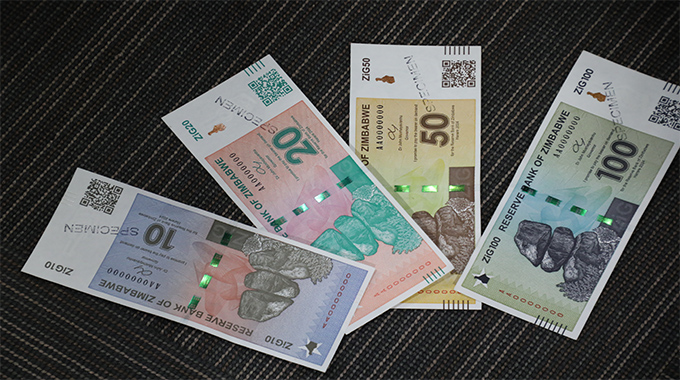Obtaining industrial design protection in regional, international markets

Aleck Ncube
Why protect designs abroad?
IF your SME intends to export products bearing an original design, or intends to license the manufacture, sale or export of such products to other firms in foreign countries, it should consider protecting its designs in such countries in order to enjoy the same benefits of protection abroad as it enjoys in the domestic market.
How do you protect your industrial designs abroad?
Industrial design protection is territorial.
This means industrial design protection is generally limited to the country or region where you have registered your design.
Hence, if you wish to have your industrial design protected in export markets, you would have to make sure that protection is applied for in those specific countries.
It is important to bear in mind that you usually have six months from the date on which you applied for protection in the first country to claim the right of priority when you apply for design protection in other countries.
Once this period has lapsed, you will be unable to apply for design protection in foreign countries, as your design will no longer be considered new.
Three ways of protecting your industrial designs abroad.
The National Route: SMEs may seek protection by applying separately to the national Intellectual Property (IP) offices of each country in which they intend to obtain protection.
The process can be rather cumbersome and expensive as translation into the national languages is generally required as well as payment of administrative (and sometimes legal) fees.
The Regional Route: If you are interested in a group of countries that are members of regional agreements which enable the registration of designs in more than one country, then you can consider filing a single application at the regional IP office concerned. Regional IP offices include:
African Regional Intellectual Property Organisation (ARIPO) based in Harare, Zimbabwe, the European Patent Office (EPO), Organisation Africaine de la PropriétéIntellectuelle (OAPI) for protection in French-speaking African countries.
The International Route: Companies that wish to register their designs internationally in several countries may also use the procedures offered by the Hague Agreement Concerning the International Deposit of Industrial Designs, a WIPO-administered treaty. An applicant from a member country to the Hague Agreement can file a single international application with WIPO; the design will then be protected in as many member countries of the treaty as the applicant wishes. The agreement provides applicants with a simpler and cheaper mechanism for applying for industrial design registration in various countries.
Enforcing your industrial designs
Enforcing any IP right may be a complex issue for which it is usually advisable to seek professional assistance from a competent IP lawyer.
It is important to bear in mind that the main responsibility for identifying and taking action against imitations or infringement of an industrial design lies with its owner.
In other words, you are responsible for monitoring the use of your design in the market place, identifying any imitators or counterfeiters and deciding whether, how and when to take action against them.
Whenever you believe there is infringement, you may choose, as a first step, to send a “cease or desist letter” informing the infringer of a possible conflict between his design and your exclusive rights.
The assistance of a lawyer in drafting such a letter is recommended. If the infringement persists, it may be necessary to take legal action against the infringer.
In order to prevent the importation of infringing goods, measures at the international border are available to the design-owner in many countries through the national customs authorities.
Other legal instruments for protecting industrial designs
What are the differences between copyright protection and industrial design protection for designs? In some countries, the applicable law recognises copyright protection for certain designs, for example, in the design of textile and fabrics.
In many countries you may obtain cumulative protection, (i.e. copyright protection and industrial design protection) which can exist concurrently for the same design, while in a few countries, the two forms of protection are mutually exclusive.
The first step before taking any decision on how best to protect your design is to understand the differences between these two forms of protection. Some of the main differences are outlined below.
Registration
Under industrial design law the industrial design generally needs to be registered by the applicant before publication or public use anywhere or at least in the country where protection is claimed.
The registration certificate, provided by protection under industrial design law, may prove useful in cases of infringement, as it provides a more solid basis from which you may enforce your exclusive rights.
Copyright in works considered to be original subsists without formalities. While registration is not necessary for protection, copyright depositaries exist in some countries where you may deposit your design and obtain a certificate.
Duration
Industrial design protection generally lasts for a period that varies between 10 and15 years depending on the country where protection is sought. It must also be borne in mind that the process of registration of industrial designs may take some time, and may not always be adequate for products that are linked to passing trends (e.g. fashion products).
Copyright endures in most countries for the life of the author and 50 or 70 years after his death.
Scope of protection
The right conferred by registration of an industrial design is an absolute right in the sense that there is infringement whether or not there has been deliberate copying.
To enforce rights under copyright law, the copyright owner must prove that the allegedly infringing work is a direct or indirect reproduction of the work protected by copyright.
Types of products
In most countries, not all designs can be protected by copyright but primarily those that may be considered as works of art.
While the distinction may not always be clear, some designs, such as the shape of manufactured products, are unlikely to be protectable under copyright law, while others, such as textile designs, are often covered by both forms of protection.
Costs
Registering your design in the countries you are interested in, means that you will have to pay the applicable fees.
In addition, it may be useful or necessary to use the services of an IP agent to assist you in drafting the application, which will incur additional costs.
Given that no formal registration of works protected by copyright is required by most national copyright laws, there are generally no direct costs relating to copyright protection.
In conclusion, while the protection granted by registered industrial designs is stronger in that it covers even unintentional infringement and provides a registration certificate which maybe an important proof in case of infringement, it involves more effort (financial and administrative) because it requires registration, and is shorter in duration.
Obtaining industrial design protection in regional, international markets








Comments